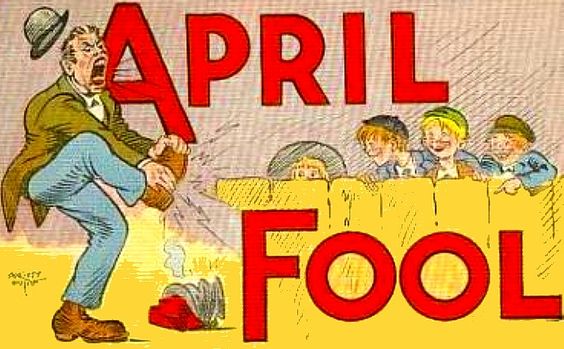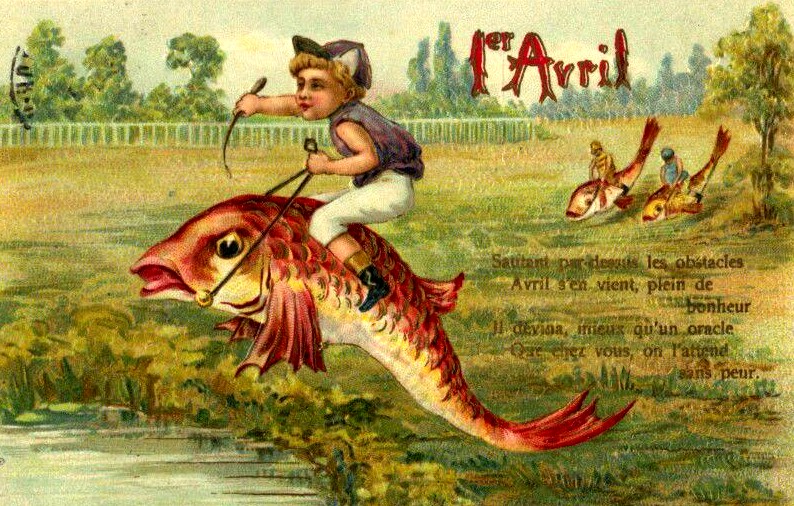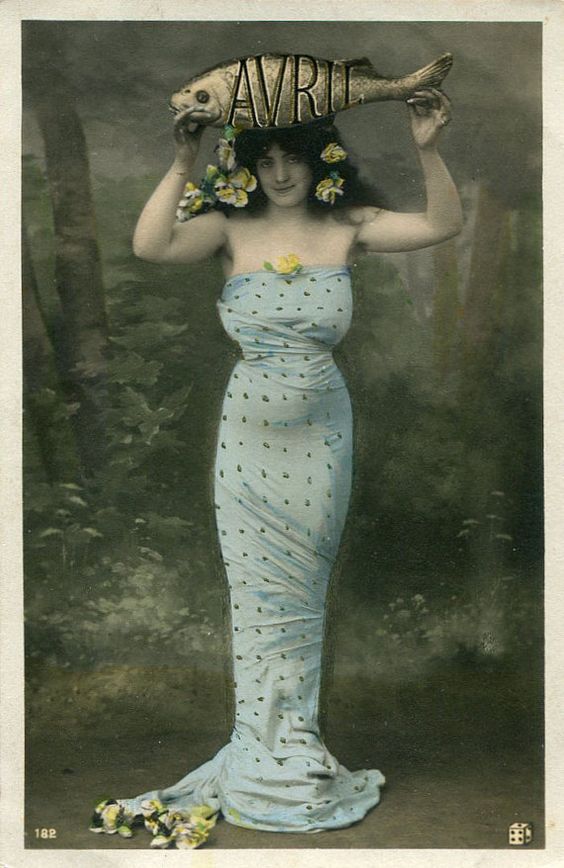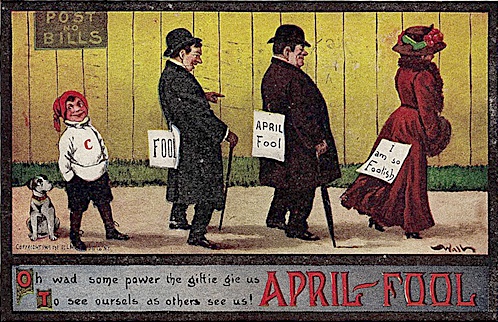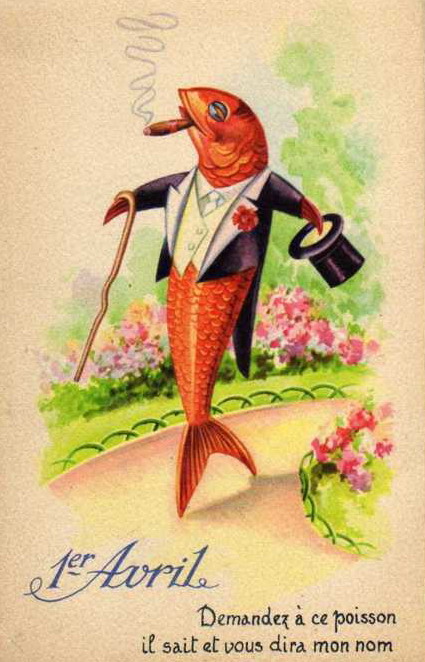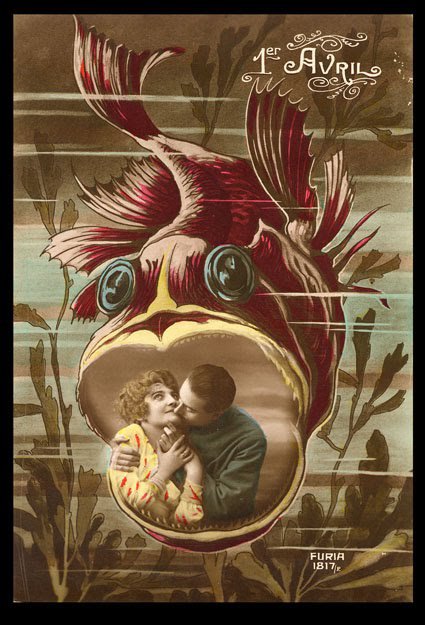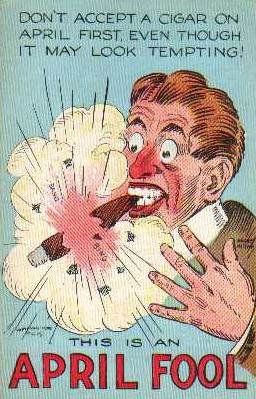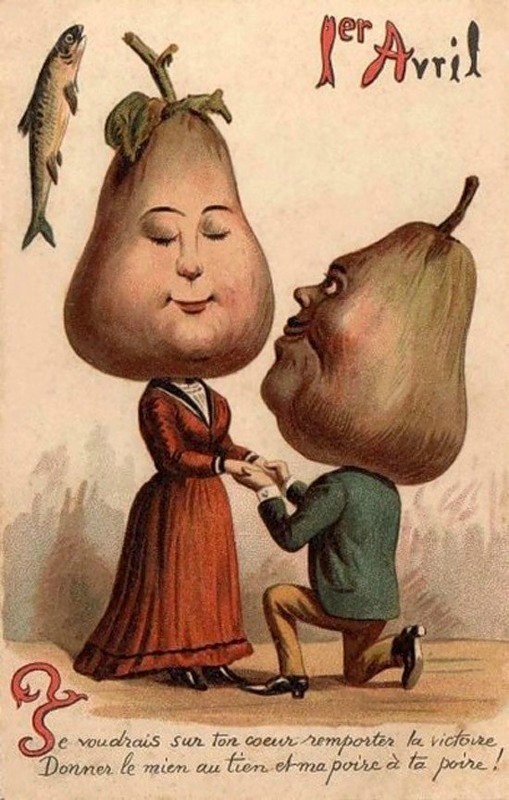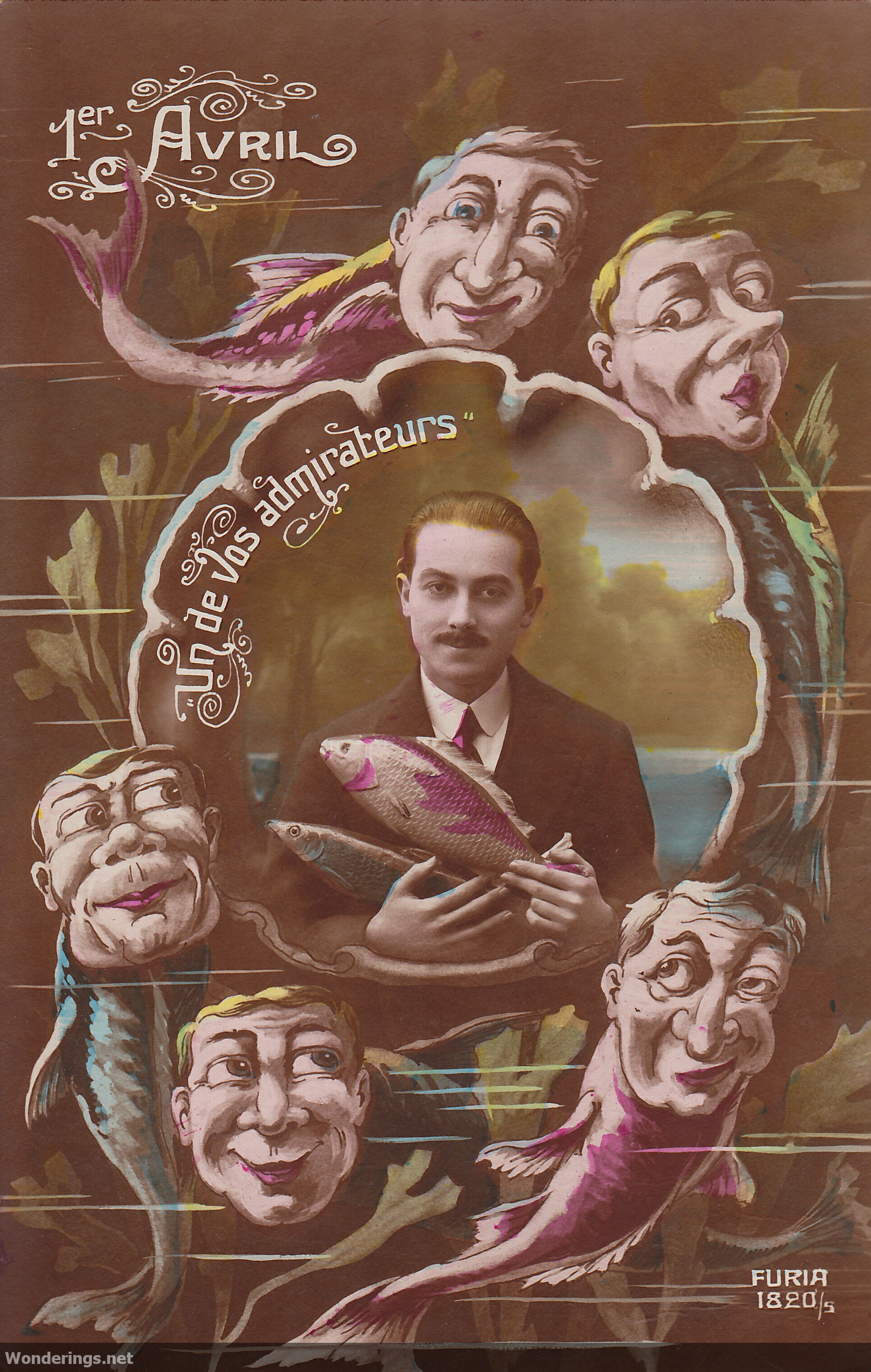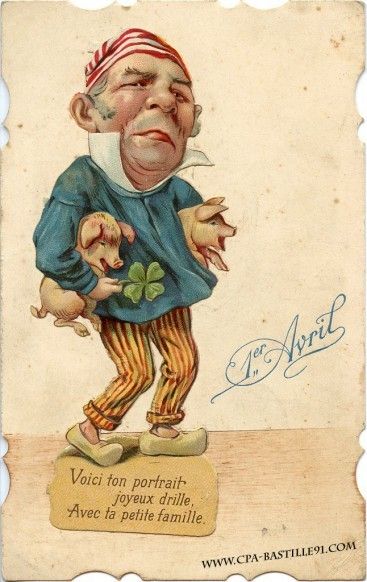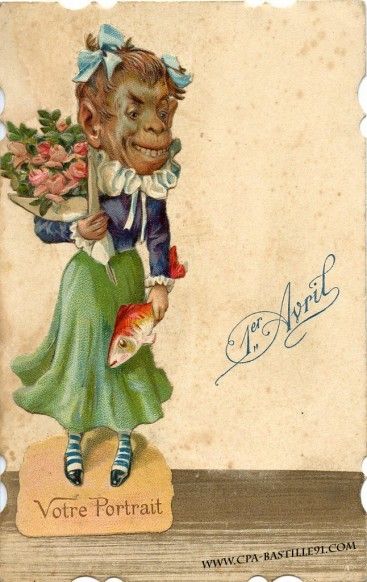Learn the origin of April Fool’s pranks — and check out these bizarre vintage April Fool’s Day cards.
I’m not making this up: No one’s 100% sure how April Fool’s Day started, but it probably began when the New Year moved dates
The flowers begin to bud, robins appear, and a few gorgeously warm days start to sneak their way in. Springtime in Chicago is wonderful — though Duke and I will never forget that early April trip we took to Switzerland, when they were harvesting the spaghetti from the trees. Our timing was perfect; one more week and the limp noodles hanging from the branches would no longer be al dente.
Coincidentally, Easter falls on April 1 this year, as it did in 1957, when the BBC aired a three-minute segment showing people plucking strands of spaghetti from trees. Some viewers even called the BBC, wanting to know where they could purchase their very own spaghetti tree. Of course, it was just an elaborate prank — the first televised April Fool’s Day hoax.
Because spaghetti doesn’t grow on trees, silly.
The Amusingly Mysterious Origins of April Fool’s Day
This isn’t a joke: No one’s completely sure where and when April Fool’s Day started, but they’ve got some pretty good ideas.
A favorite theory is that it has to do with the switch from the Julian calendar, which was introduced by Julius Caesar, to the Gregorian calendar, named for Pope Gregory XIII. The decision was made in 1563 at the Council of Trent. That meant the New Year shifted from the end of March to January 1.
“A poisson d’avril symbolized an easily caught fish and, by extension, a gullible person.”
Some years later, in 1582, the French made the calendar switch. Those who didn’t get the memo or refused to play by the new rules were poked fun at and had paper fish (poisson d’avril, or April fish) sneakily placed on their backs. A poisson d’avril symbolized an easily caught fish and, by extension, a gullible person.
It’s also thought that the ancient Greco-Roman festival known as Hilaria (the Day of Joy) is a precursor to April Fool’s Day. This pagan celebration began on March 25, shortly after the Vernal Equinox, to honor Cybele, Mother of the Gods, and the resurrection of her castrated lover (and in some tellings, her son!), Attis.
The festivities conclude on April 1, accompanied by feasts, games, masquerades and practical jokes — hence the association to April Fool’s Day.
Even the Indian holiday Holi, which takes place around this time of year, involves much mischief-making. Associated with the Hindu demoness, Holika, people celebrate the triumph of good over evil by throwing brightly colored powder on each other.
During the 18th century, April Fool’s Day caught on in Britain. The Scottish celebrated a two-day event that started with “hunting the gowk” (a word for the cuckoo, which represents a fool), during which people are sent on wild goose chases. This was followed by Tailie Day, where the butts of jokes had fake tails or Kick Me signs pinned to their backsides.
Have a laugh at these hilarious (and bizarre) vintage April Fool’s and poisson d’avril cards. –Wally

